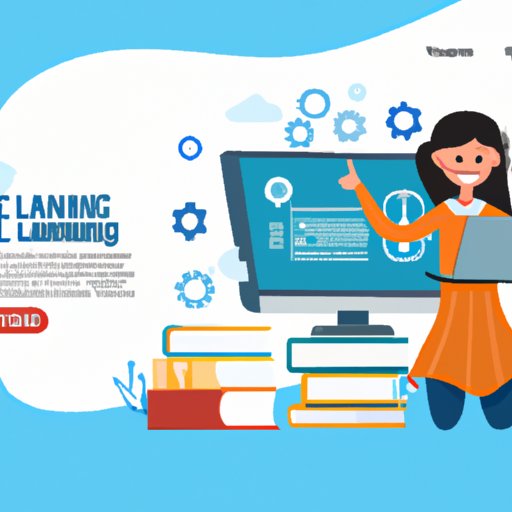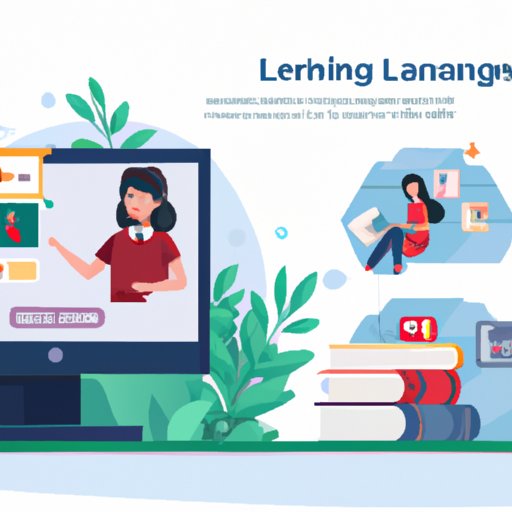
The Ultimate Guide to Understanding eLearning: Everything You Need to Know
The world is evolving rapidly, and as such, so are our means of education. E-learning, which refers to electronic learning or online education, is at the forefront of this evolution. It has reshaped the traditional modes of learning and brought education to the fingertips of people worldwide. But with all the buzz about eLearning, there still seems to be a lack of knowledge surrounding the concept. In this article, we will go in-depth on what eLearning entails, its benefits, misconceptions, drawbacks, future trends, and so much more.
Defining eLearning and its various forms
Electronic learning or eLearning is an umbrella term that encompasses different forms of education delivered through electronic means. It ranges from taking courses online, using digital textbooks, participating in virtual classrooms, to using educational software or apps. E-learning can be entirely self-paced, synchronous, asynchronous, or blended, which is a hybrid between traditional and online learning.
Advantages of eLearning
One of the significant benefits of eLearning is its flexibility. In traditional learning, you would have to adjust your schedule to fit the times of your classes. With eLearning, however, you can learn at your own pace, on your own time, and from any place that offers an internet connection. This flexibility makes it perfect for working adults looking for a career boost, stay-at-home parents, travelers, and even those living in remote areas.
E-learning is also cost-effective. You eliminate expenses such as commuting, housing, and meal plans, as well as have reduced course material costs. Additionally, you receive immediate feedback, and you can revisit the material at any time, ensuring better retention.

Examples of eLearning in different contexts
E-learning has become increasingly popular in recent years, and therefore, its growth has given rise to its use in various settings. One example is in corporate environments that provide online training for employees on product knowledge, customer service, and even compliance training. In the education sector, universities, and colleges offer fully online degrees or hybrid classes for students around the world. The healthcare industry also uses e-learning for training on health and safety regulations, best practices, and emergencies.
Common misconceptions about eLearning
With any new technology or concept, there are bound to be misconceptions. One such misconception is that eLearning is just a way to watch a few videos and pass a quiz. In reality, e-learning can be much more in-depth, with interactive content, simulations, and virtual reality tools. Another misconception is that eLearning is impersonal and limits interaction with teachers and fellow learners. However, many e-learning courses provide opportunities for feedback from instructors and collaborative work with peers.
Why eLearning is the Future of Education and How to Leverage Its Benefits
In recent years, there has been a rapid shift towards integrating technology in education. With advancements in Artificial Intelligence, Virtual Reality, and Gamification, there is an opportunity to revolutionize education through eLearning.
E-learning can help fill the gaps in traditional education that fail to support learners of different learning styles. With eLearning, learners can access personalized learning, engaging in activities, and knowledge acquisition methods that best complement their learning style.
Schools and universities worldwide have leveraged eLearning to improve the quality of education they offer to their students. One such example is the Massachusetts Institute of Technology (MIT). They partnered with edX, a non-profit online learning platform, to offer their courses free of charge to learners worldwide. The result was that over a million learners accessed the courses, improving the quality of education MIT offered for free.
How eLearning is Revolutionizing Traditional Learning Methods
Tracing the history of learning reveals that the traditional models of education have been refined, but they remain relatively unchanged. On the other hand, eLearning is constantly evolving, with new technologies emerging regularly.
E-learning provides a dynamic learning experience that can adapt to changes in the learner’s environment, culture, and interests. E-learning also breaks down the rigid structures that characterize traditional education, providing a more personalized learning experience.
One specific example that shows the advantage of eLearning is its ability to provide instant feedback. In traditional education, feedback is usually given in the form of grades, which can take some time. E-learning, on the other hand, gives immediate feedback through interactive quizzes and simulations, allowing learners to fix any knowledge gaps before proceeding to the next level of learning.
Challenges faced by eLearning and how to overcome them
Like any other innovation, eLearning also comes with its challenges. One main hurdle is ensuring that learners have access to the technology required for e-learning. Other challenges include the perception that eLearning may not be as credible as traditional education, the potential lack of structure for some learners, and issues with keeping students motivated with the lack of face-to-face interaction.
Despite these challenges, there are some ways to overcome them. One way is to ensure that all learners have access to the technology required for e-learning. Educational institutions can offer technological support to learners who may not have access, partner with organizations to provide devices and internet connectivity, or subsidize the cost of digital devices. Another way is for eLearning platforms to provide structured and credible courses that align with international educational standards. Additionally, institutions can create a sense of community for e-learners through avenues such as a chat room or virtual classroom.
The Benefits and Drawbacks of eLearning: What You Need to Consider
As with anything in life, there are pros and cons to eLearning.
Some benefits of eLearning include the flexibility of learning, cost-effectiveness, personalized and immediate feedback, and the opportunity to learn at one’s pace.
The drawbacks of eLearning include the lack of face-to-face interaction with peers and instructors, the potential for technical issues that may impede learning, and the perception of the credibility of eLearning compared to traditional education.
Before diving into eLearning, it is essential to weigh these advantages and disadvantages based on personal needs and preferences.
Top Trends in eLearning: What to Expect in the Coming Years
The future of eLearning appears to be more innovative than ever before, as emerging technologies continue to reshape education.
One such technology is Artificial Intelligence (AI), which has the potential to personalize education for every learner using data-based decision-making. Another emerging technology is Virtual Reality (VR), which can provide learners with immersive educational experiences.
Already some educational institutions are implementing AI and VR to improve remote learning. For instance, the University of Maryland provides a virtual reality campus tour for prospective students who cannot visit the campus in person.
From Distance Learning to eLearning: The Evolution of Education in the Digital Age
Distance learning and eLearning are often used interchangeably, but they differ slightly.
Distance learning is a form of education where the educator and the learners are in different locations, and the primary mode of communication is through correspondence, while eLearning involves learning through electronic means, which can even be at the same location.
The history of distance learning dates back to the 1800s, but eLearning came about with the emergence of computers and internet technologies. However, with the current evolution of technology, eLearning is poised to redefine the concept of education entirely.
Conclusion
E-learning is the way of the future, and it is gradually becoming the norm. In this article, we have delved into the various aspects of eLearning, from its definition, benefits, drawbacks, misconceptions, and future trends. It is essential to note that eLearning does not replace traditional learning, but it has its place in the educational ecosystem.
As such, it is crucial for us to have a basic understanding of the concept so that we can leverage its advantages and overcome any challenges that may arise. So go ahead and explore the e-learning opportunities available to you.




